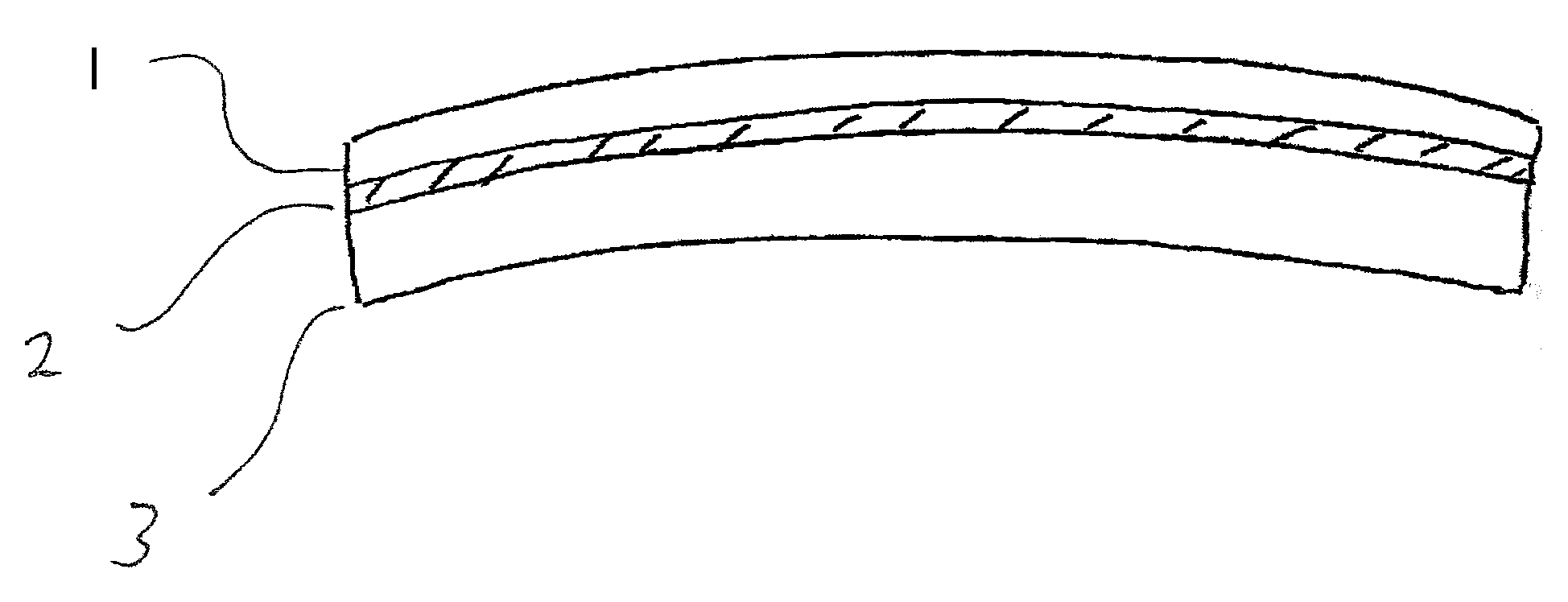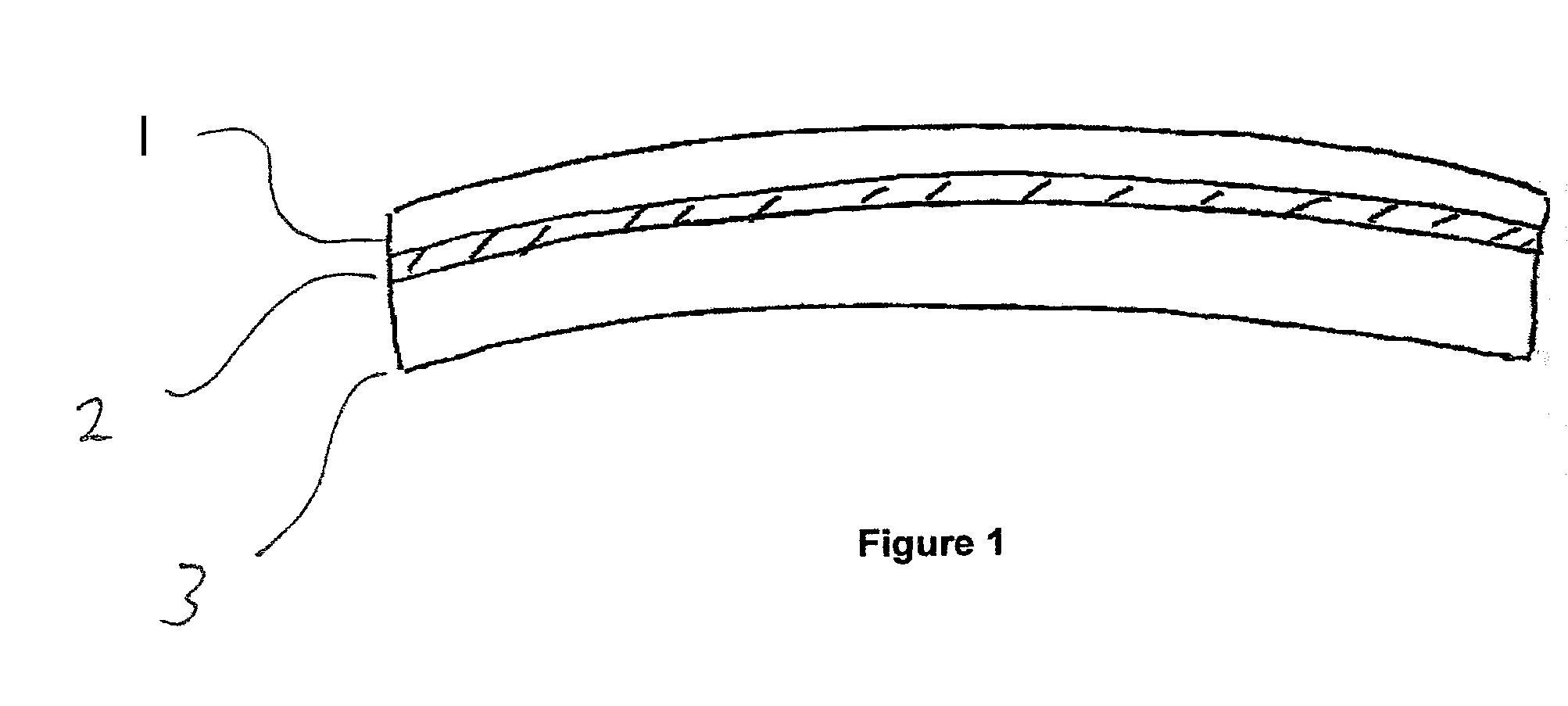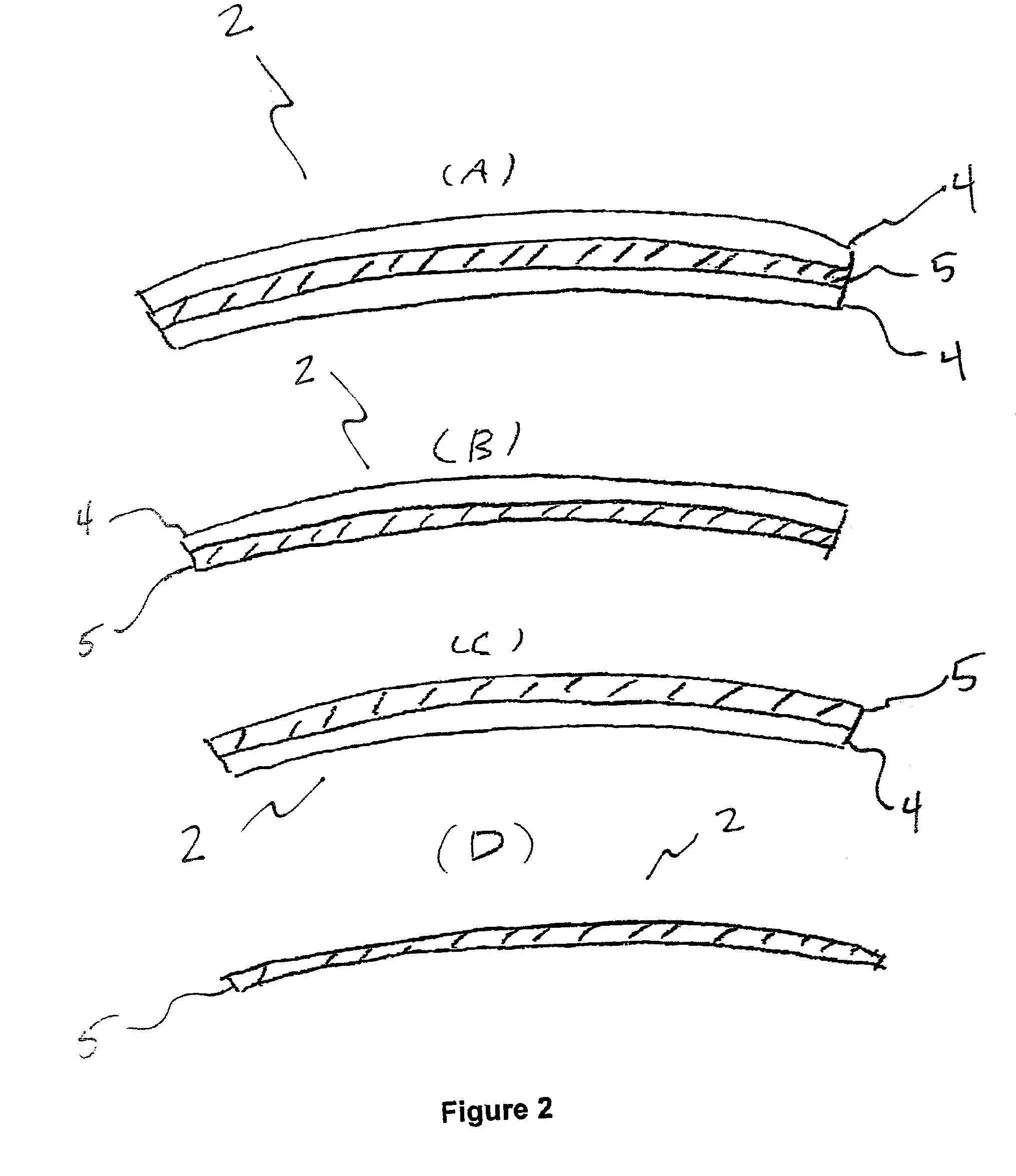Photochromic lens
a technology of photochromic dyes and lenses, applied in the field of photochromic dyes, can solve the problems of fatigue or wear, plastic resins used in the manufacture of ophthalmic lenses do not provide the best host material for photochromes, and cannot easily activate photochromes, so as to reduce the amount of photochromic dyes, good resistance to photochromic dye fatigue, and high impact resistance
- Summary
- Abstract
- Description
- Claims
- Application Information
AI Technical Summary
Benefits of technology
Problems solved by technology
Method used
Image
Examples
example 1
[0035]A photochromic film was prepared according to the examples in U.S. patent application Ser. No. 10 / 938,275. The polyurethane layer is 40 μm thick, and the protective layers are 76 μm cellulose acetate butyrate (CAB) films (K-Mac). The polyurethane layer and protective layers were bonded together to form a photochromic laminate. The laminate was masked with a 3M film (24S56W). A 70-mm disk was die-cut off from the above laminate, and formed into a 6-base laminate wafer through a thermo-vacuum forming process. The temperature was 255° F., and the forming time was 200 seconds. A 70-mm lens cast gasket and two 6-base glass molds (front and back) were used to cast the photochromic lens. The masked film is thereafter removed prior to placement of the laminate wafer into the gasket. The laminate wafer was fixed in the gasket about 1 mm away from the front mold surface with help of a spacer. A clear UV-curable cast resin from OptiCast was injected into the front and back cavities. The ...
example 2
[0036]To a solution of 18% by weight of a polyester urethane (Tecoflex CLC-93A from Thermedics) in THF solvent was added 2% each of Tinuvins 765,144, and Irganox 1010 (all from CIBA Corporation), and 0.8% of naphthopyran photochromic dye VP0762 (Proprietary Vision-Ease Dye). The mixture was then cast on a flat borosilicate glass plate and the solvent allowed to evaporate. A photochromic film of about 0.2 mm thick was obtained. The photochromic film was then placed between two glass molds held together with a standard casting gasket. A mixture of 58.3 grams of casting monomer P11 (NOF Corporation), 0.6 gram of Tinuvin 765, 0.26 gram of Trigonox 23 catalyst and 0.37 gram of Trigonox 21 catalyst was introduced between the glass molds and around the polyurethane film. The mold and gasket assembly was placed in a water bath and cured in a cycle that ramps the lens up to 90° C. over a 20 hour period. The resultant thermoset, cast lens is then separated from the glass molds. The lens had a...
example 3
[0037]A photochromic film was prepared according to the examples in U.S. patent application Ser. No. 10 / 938,275. The polyurethane layer is 40 μm thick, and the protective layers are 350 μm thick polycarbonate films. The polyurethane layer and protective layers were bonded together to form a photochromic laminate. The laminate was masked with a 3M film (24S56W). A 70-mm disk was die-cut off from the above laminate, and formed into a 6-base laminate wafer through a thermo-vacuum forming process. The temperature was 255° F., and the forming time was 200 seconds. A 70-lens cast gasket and two 6-base glass molds (front and back) were used to cast the photochromic lens. The masked film is thereafter removed prior to placement of the laminate wafer into the gasket. The laminate wafer was placed against the front mold surface and placed into the gasket with the back mold. A clear UV-curable cast resin from OptiCast (OPIV-B) was injected into the back cavity. The cast resin in the above setu...
PUM
| Property | Measurement | Unit |
|---|---|---|
| Tg | aaaaa | aaaaa |
| Tg | aaaaa | aaaaa |
| thickness | aaaaa | aaaaa |
Abstract
Description
Claims
Application Information
 Login to View More
Login to View More - R&D
- Intellectual Property
- Life Sciences
- Materials
- Tech Scout
- Unparalleled Data Quality
- Higher Quality Content
- 60% Fewer Hallucinations
Browse by: Latest US Patents, China's latest patents, Technical Efficacy Thesaurus, Application Domain, Technology Topic, Popular Technical Reports.
© 2025 PatSnap. All rights reserved.Legal|Privacy policy|Modern Slavery Act Transparency Statement|Sitemap|About US| Contact US: help@patsnap.com



